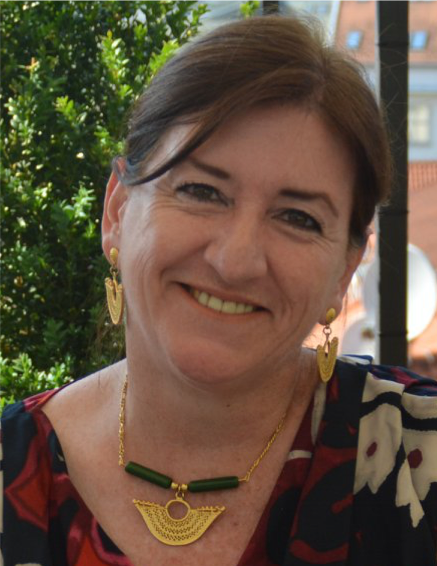Affiliation: San Carlos University

Professor Liwy Grazioso is the current Minister of Culture and Sports of Guatemala. She received her degree in Archaeology at the National School of Anthropology and History (ENAH) Mexico, and a Masters in Mesoamerican Studies by the Universidad Nacional Autónoma de México. Her areas of research interest include Mesoamerican Archaeology, protection and conservation of cultural heritage, iconography, spatial analysis, hydraulic systems, and museums and collections. She is one of the Joukowsky lecturers for the AIA’s 2023-2024 National Lecture Program
Río Azul is an ancient Maya city located in NE Peten in Guatemala. In the late 70’s the site was heavy looted and artifacts were being sold at the auction market around the world. In the 80’s an Archaeological Project took place and they documented all the looter’s excavations and the tombs they have emptied, most of them have beautiful mural painting. The site gained notoriety and became quite famous. At the end of the project they were closed for protection and with time they got forgotten. In the late 90’s they were opened to take pictures to promote tourism and they became a target destination and tourists insisted in going in although the site wasn’t open to the public and have no conditions to handle visitors. At that time there was no control and no protection, people went in and out without care and with time the murals were severely damaged.
It was until 2003, when we visited Río Azul, looking for the possibility to start a new research project in the area, that we found out the tombs were opened and after seing their condition it was clear we must to do something about it.
Therefore, in 2004 during PABA’s first season (PABA = Proyecto Arqueológico del Bajo Azúcar/Bajo Azucar Archaeological Project) we evaluated the condition of the site to propose a conservation program and we created PITRA (Programa de Intervenciones de las Tumbas de Río Azul/Tomb’s Intervention Programme at Río Azul). We raised the funds to start dealing with the site’s deterioration and we began to sanitize them, free them from the disturbing fauna that have made the tombs their home and make the chambers and features stable. We did restoration work for several seasons combining research with conservation and in the process we ran into many interesting features that were not seen before, it allowed us to know more about their construction techniques.
All the Río Azul tombs are different and most of them have beautiful paintings with very interesting iconography. We will present the work we have done in 3 of the tombs, how they were constructed, its mural paintings and special features. We must be aware that cultural heritage is a nonrenewable resource, once it’s destroyed it’s lost forever and we must take responsibility and try to protect and preserve cultural heritage for generations to come.